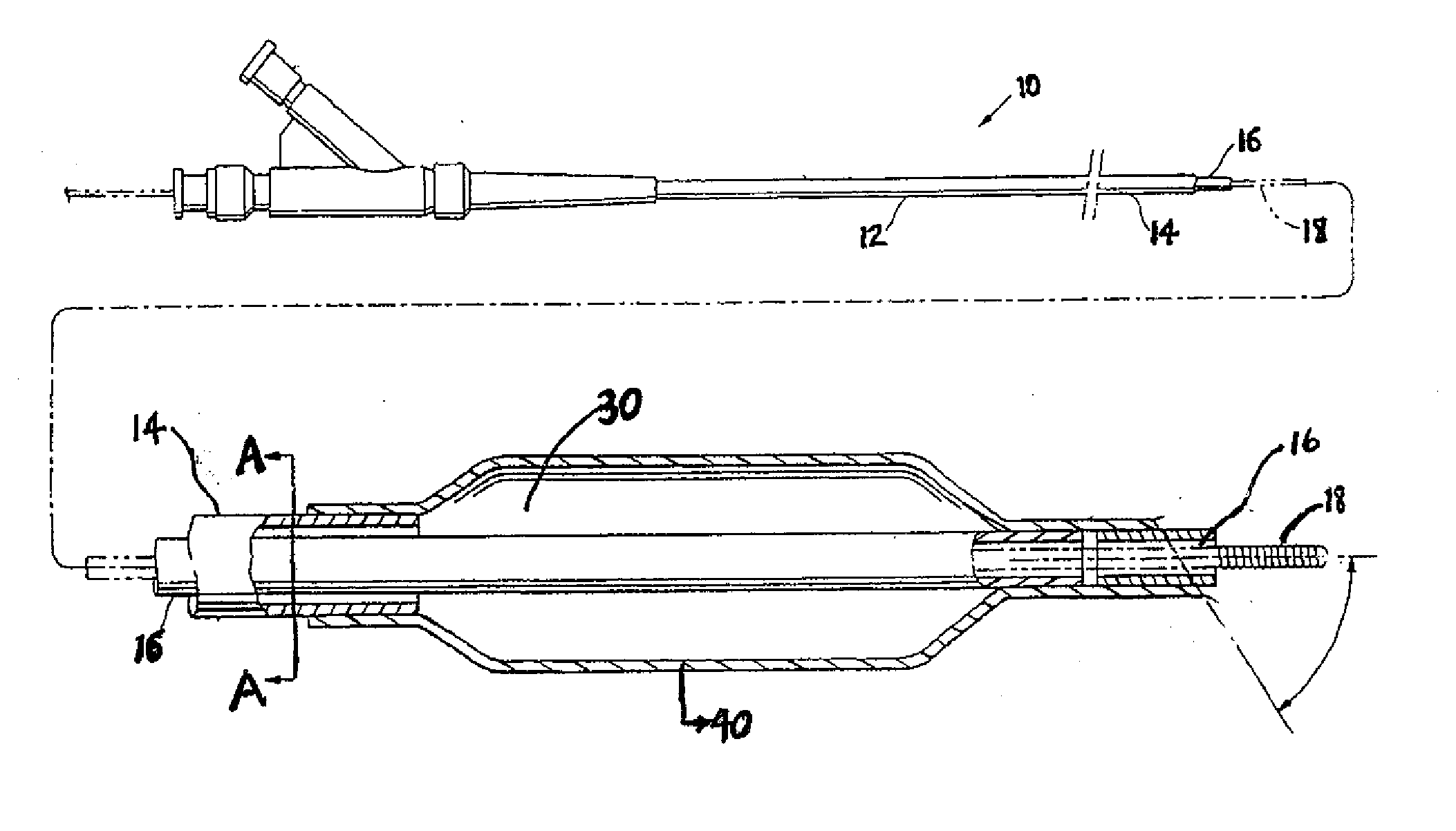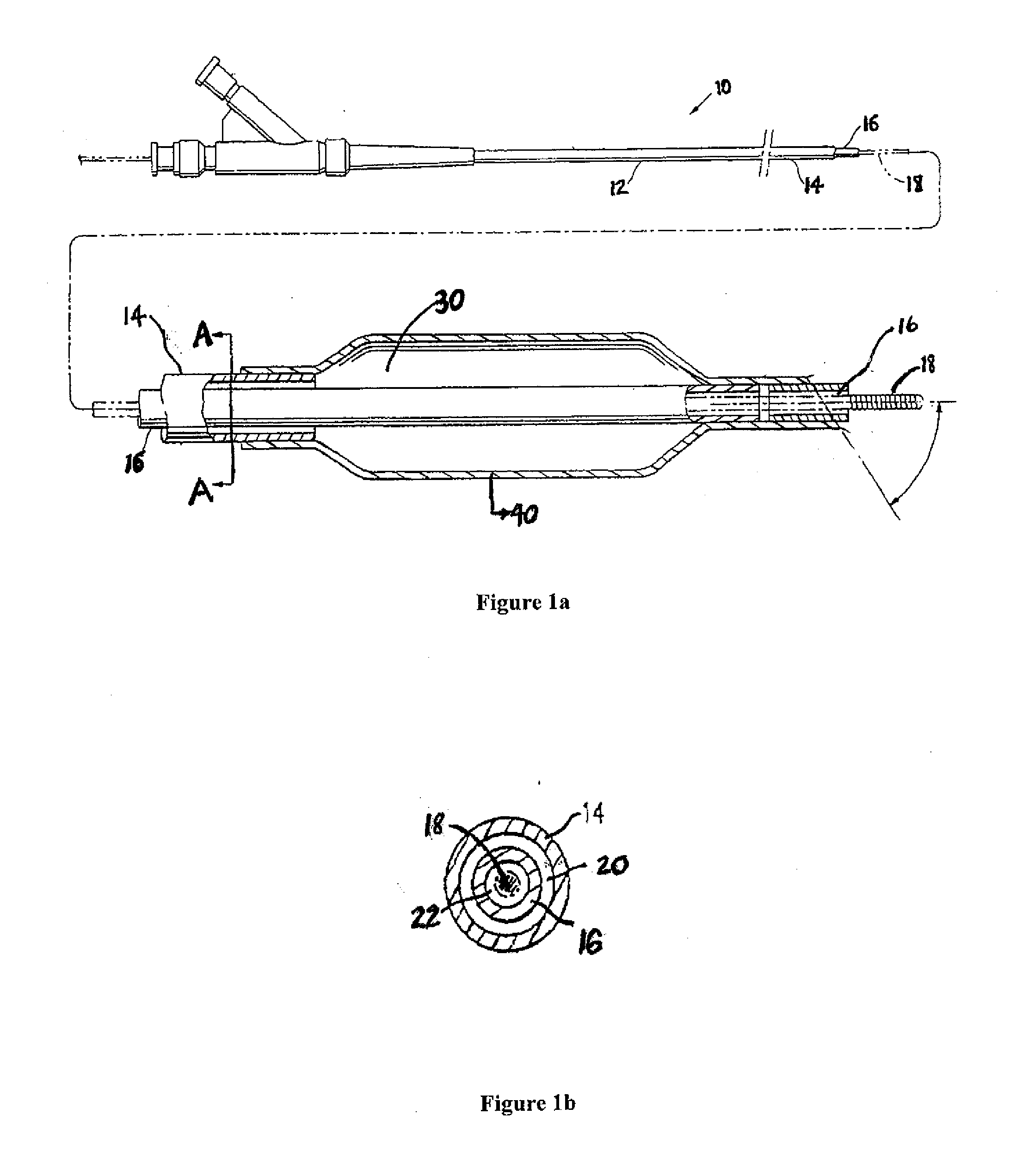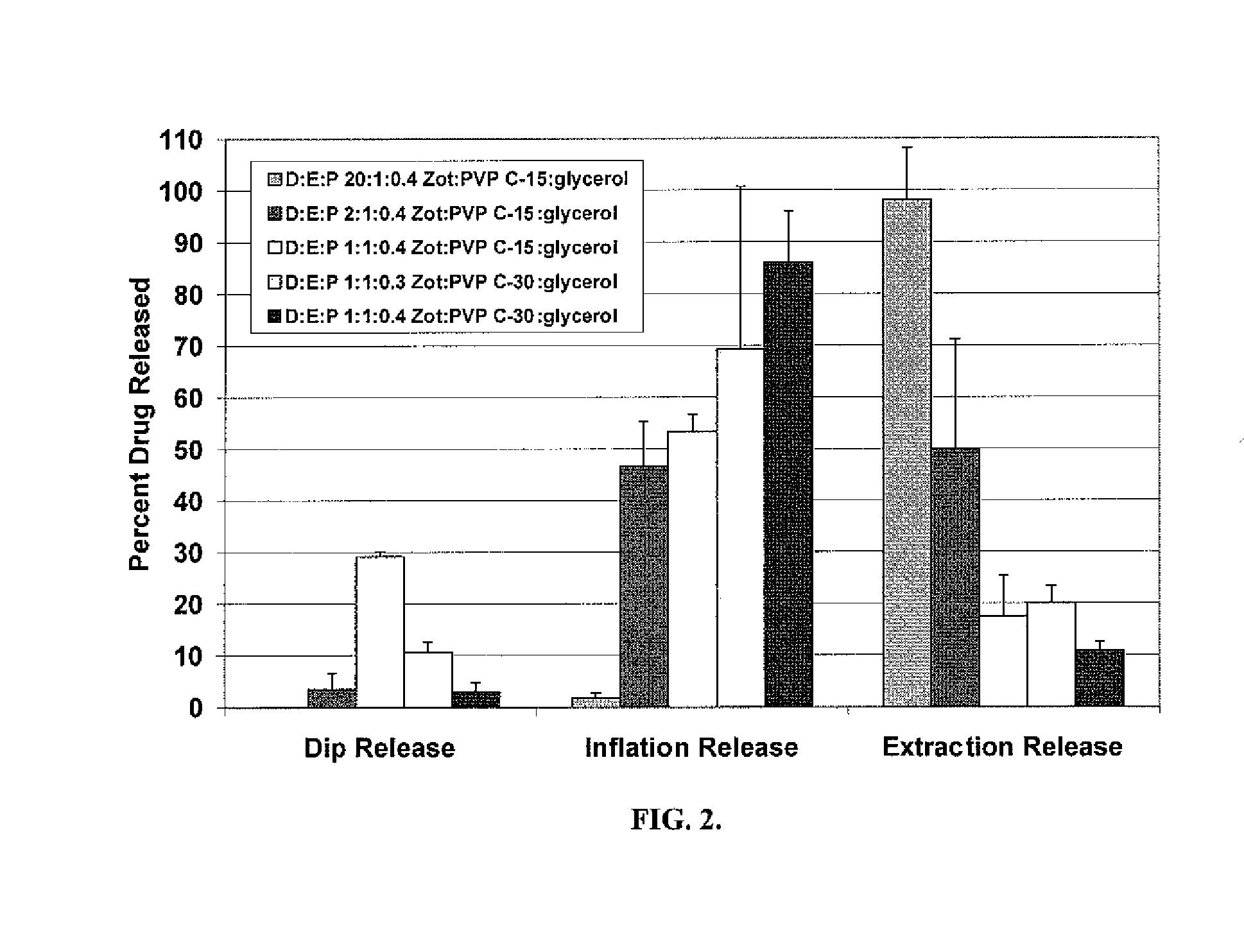Coatings with tunable molecular architecture for drug-coated balloon
a drug-eluting balloon and molecular structure technology, applied in the field of drug delivery, can solve the problems of drug-eluting balloons, late stent thrombosis, abrupt closure of the treated wall of the blood vessel, etc., and achieve the effects of reducing the release rate of therapeutic agents, reducing elasticity, and increasing adhesion to the vessel wall
- Summary
- Abstract
- Description
- Claims
- Application Information
AI Technical Summary
Benefits of technology
Problems solved by technology
Method used
Image
Examples
examples
[0092]The present application is further described by means of the examples, presented below. The use of such examples is illustrative only and in no way limits the scope and meaning of the disclosed subject matter or of any exemplified term.
example a
[0093]To simulate drug release from a drug coated balloon, a three step in-vitro release method was developed. This method consists of a sequential dip release in 37° C. porcine serum for 1 min, inflation release in 37° C. porcine serum for 1 min and extraction release in 50% acetonitrile solution designed to mimic the balloon release during delivery to the lesion, drug delivery on inflation and the remaining drug on the balloon respectively. The resulting zotarolimus concentrations in the porcine serum supernatant are measured by liquid chromatography mass spectrometry (LCMS) and drug from the extraction measured by high performance liquid chromatography (HPLC).
[0094]This in-vitro release method was used to evaluate the drug release from zotarolimus (Zot):poly(vinylpyrrolidone) (PVP):glycerol drug coated balloons as a function of drug:excipient:plasticizer ratio (D:E:P) and PVP K-value. For the combined dip release and inflation release that simulates coating dissolution rate and d...
example b
[0095]Scratch tests of coatings on glass slides were used to qualitatively evaluate coating mechanical properties in terms of hardness and tackiness. FIGS. 3 through 6 are optical micrographs of drug delivery balloon coating formulations coated onto glass slides. To produce the optical micrographs, the coating formulations were pipetted onto glass slides, and then the slides were baked at 50° C. for one hour. While observing under an optical microscope, the coatings were scratched with a steel mandrel to assess their hardness, brittleness, and resistance to fracture in the dry state. Stickiness was assessed by placing another clean glass slide onto the coatings, pressing them together and noting the force, if any, required to pull them apart.
[0096]It was observed that increasing the drug to excipient ratio for zotarolimus:PVP:glycerol to 10:1:0.4 (FIG. 3 left panel) from 2:1:0.4 (FIG. 3 right panel) resulted in increased hardness and reduced tackiness. Representative optical microgr...
PUM
| Property | Measurement | Unit |
|---|---|---|
| polydispersity index | aaaaa | aaaaa |
| dissolution time | aaaaa | aaaaa |
| dissolution time | aaaaa | aaaaa |
Abstract
Description
Claims
Application Information
 Login to View More
Login to View More - R&D
- Intellectual Property
- Life Sciences
- Materials
- Tech Scout
- Unparalleled Data Quality
- Higher Quality Content
- 60% Fewer Hallucinations
Browse by: Latest US Patents, China's latest patents, Technical Efficacy Thesaurus, Application Domain, Technology Topic, Popular Technical Reports.
© 2025 PatSnap. All rights reserved.Legal|Privacy policy|Modern Slavery Act Transparency Statement|Sitemap|About US| Contact US: help@patsnap.com



